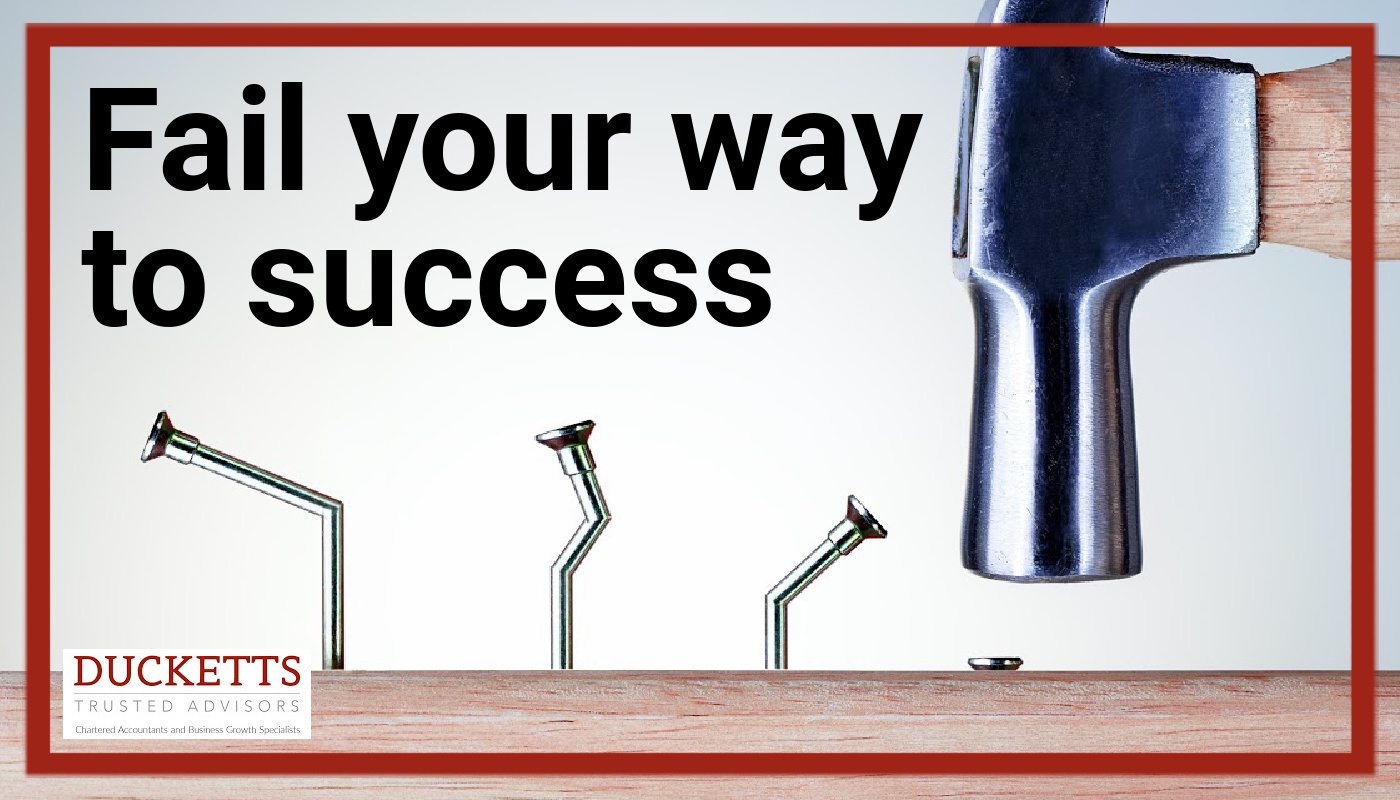Published:

Failure. It’s not something that we generally like or encourage. It has a negative feel about it and it’s not something that we’re proud of. But the positive thinkers will say that they never fail – they learn, they adjust, and they go again, still focusing on achieving their goal or target.
We think that it’s ok to fail sometimes. It shows we’re pushing the boundaries, it shows a desire to change and grow, and we learn far more from failure than success.
Ski-ers and snowboarders have a phrase – ‘No Falls No Balls’. If we’re not falling we’re not challenging ourselves, not pushing, not learning – but we don’t want the falls to be catastrophic, we still need to manage the risks and impacts.
Safe to Fail and Fail Fast
So how do we operate in business to ensure that it’s Safe to Fail and also that we Fail Fast – if we’re Failing Fast the risks and impacts are likely to be less painful and less costly.
Let’s think about diversification or a new project – at the outset we don’t know if it’s going to succeed or fail. But we want to pursue it in a way that we want and need it to succeed, but if it fails it’s ok – we learn, we adjust, we go again – but we haven’t gone bust because of it.
Plan and Forecast
The starting point is a plan – why do we want to do it? It needs to come out of the overall plan and strategy for the business. We’ll plan why we want to do it, where we want to get to, how we are going to get there and how we will monitor progress along the way.
And we’ll forecast – capital costs, profit and loss, balance sheet, cashflow – with a timescale. As part of that, we’ll assess ‘what’s the worst that can happen’ – in terms of cash, losses, people, operations, reputation – we’ll use our ‘What If’ tool to help.
The Decision
Then we’ll decide if the risks of progressing are acceptable and if they can be managed. We’ll set measures, monitoring, short term targets (focusing on timescales as if it’s going to fail we want to fail fast – minimising the impact).
Monitoring
And we’ll keep the project or diversification out of our usual business performance and measures – we don’t want it to affect our longer term trends and measures. In the short term, we don’t want the project or diversification to be ‘blamed’ for negatively affecting the ongoing performance and trends of the core business.
If the diversification or the project is successful, that’s great, let’s then bring it into the core / mainstream business.
If, in the worst case, it fails then we’ll make the decision quickly, in line with the original plan, we’ll have an acceptable loss and cash impact, we’ll fully debrief, we’ll learn and we’ll go again.
So failure is something we should accept sometimes – provided it’s Safe To Fail and provided we Fail Fast.
This is a part of what we do at Ducketts – the strategy, the plan, the forecasting detail, the ‘What If’, identification and management of the risks, the decision, the measuring and monitoring. If you want to talk please contact us.
